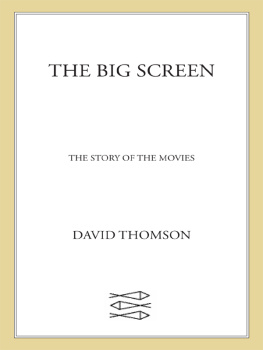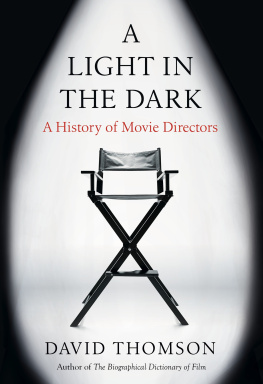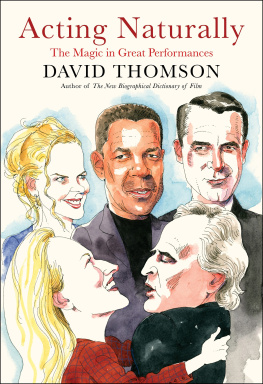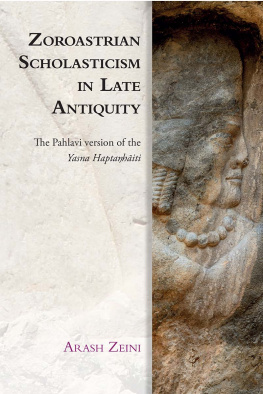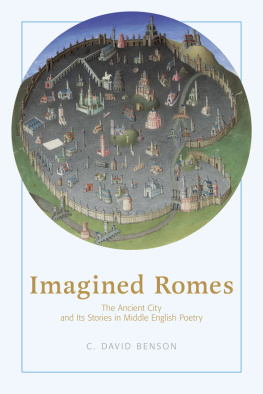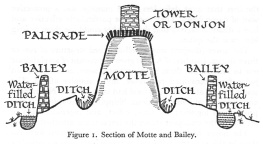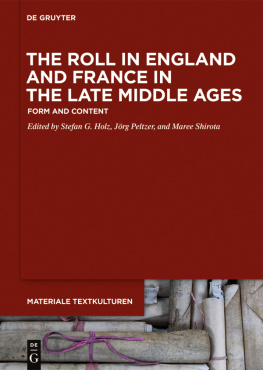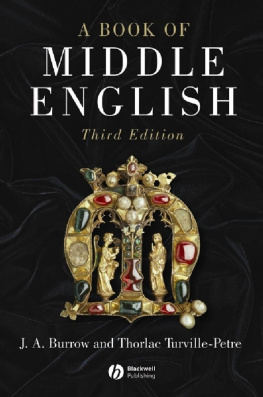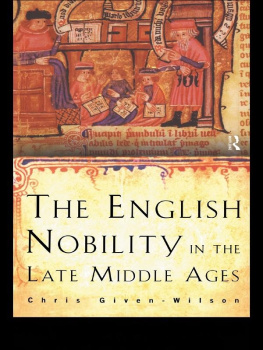First published in 1984 by Garland Publishing, Inc.
This edition first published in 2019 by Routledge
2 Park Square, Milton Park, Abingdon, Oxon, OX14 4RN
and by Routledge
52 Vanderbilt Avenue, New York, NY 10017, USA
Routledge is an imprint of the Taylor & Francis Group, an informa business
1984 by David Thomson
All rights reserved. No part of this book may be reprinted or reproduced or utilised in any form or by any electronic, mechanical, or other means, now known or hereafter invented, including photocopying and recording, or in any information storage or retrieval system, without permission in writing from the publishers.
Publishers Note
The publisher has gone to great lengths to ensure the quality of this reprint but points out that some imperfections in the original copies may be apparent.
Disclaimer
The publisher has made every effort to trace copyright holders and welcomes correspondence from those they have been unable to contact.
A Library of Congress record exists under ISBN:
ISBN 13: 978-0-367-19547-2 (hbk)
ISBN 13: 978-0-429-20308-4 (ebk)
An Edition of the Middle English Grammatical Texts
Garland Medieval Texts
Number 8
Garland Medieval Texts
A.S.G. Edwards
General Editor
Number 1:
The Commonplace Book of Robert Reynes of Acle:
An Edition of Tanner MS 407
Edited by Cameron Louis
Number 2:
The Isle of Ladies
or The Ile of Pleasaunce
Edited by Anthony Jenkins
Number 3:
The Creacion of the World:
A Critical Edition and Translation
Edited and Translated by Paula Neuss
Number 4:
Scotish Feilde and Flodden Feilde:
Two Flodden Poems
Edited by Ian F. Baird
Number 5:
Joseph of Arimathea:
A Critical Edition
Edited by David A. Lawton
Number 6:
Colkelbie Sow and
The Talis of the Fyve Bestes
Edited by Gregory Kratzmann
Number 7:
King Horn:
An Edition Based on Cambridge
University Library Ms.Gg 4.27(2)
Edited by Rosamund Allen
Number 8:
An Edition of the Middle
English Grammatical Texts
Edited by David Thomson
An Edition of the Middle English Grammatical Texts
edited by
David Thomson
Copyright 1984 by David Thomson
All rights reserved
Library of Congress Cataloging in Publication Data
Main entry under title:
An Edition of the Middle English grammatical texts.
(Garland medieval texts ; no. 8)
Includes bibliographical references.
1. English languageMiddle English, 11001500Grammar. 2. English languageMiddle English, 11001500Texts. I. Thomson, David, 1952 II. Series.
PE529.E31984427.0283-20717
ISBN 0-8240-9434-4
Printed on acid-free, 250-year-life paper
Manufactured in the United States of America
With this edition I have completed my initial purpose of making available a working text and guide to the context of a group of treatises which have so far not played their full part in the study of the late Middle Ages. The edition should be regarded as a companion volume to my Descriptive Catalogue of Middle English Grammatical Texts (Garland, New York and London, 1979), where full information on the manuscripts and matters of background to the treatises will be found. The treatment of these in the present volume is correspondingly brief, but I have included here a fuller account of the use of English in the treatises than was possible in the Catalogue where the texts themselves were not before the reader.
As always I owe a debt of gratitude to many friends and colleagues, but in particular to Professor Eric Dobson, Dr. Nicholas Orme, and to the late Dr. R. W. Hunt, of whose work this is but an echo.
After the Norman Conquest, English fell out of use as the language of elementary instruction in Latin grammar, and no grammatical texts in Middle English survive from before the closing years of the fourteenth century. Ranulf Higden, who died c.1363, was still able to complain in his Polychronicon that pueri in scholis contra morem caeterarum nationum a primo Normannorum adventu, derelicto proprio vulgari, construere Gallice compelluntur.1 But by 1385, when John of Trevisa reached this passage in his translation of Higdens work, the situation was different, and Trevisa adds the following note of his own:


